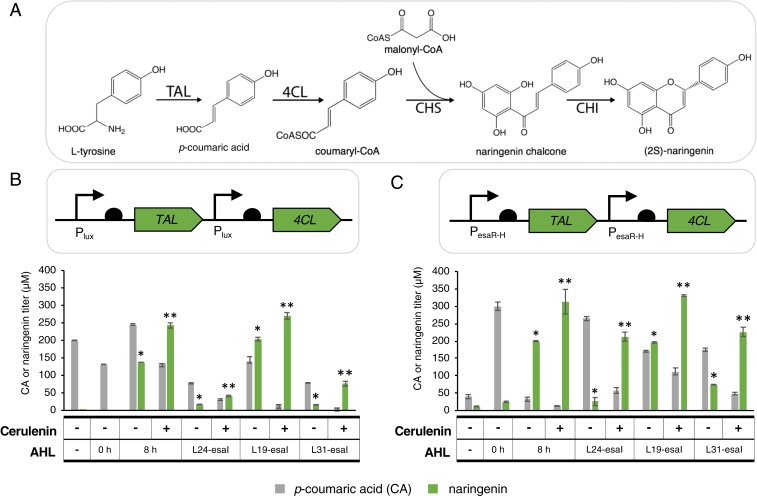Fig. 2.
Preliminary characterization of the naringenin pathway to confirm the rationale for dual regulation. (A) The naringenin pathway uses 4 heterologous enzymes—TAL, 4CL, CHS, and CHI—to convert l-tyrosine and malonyl-CoA to (2S)-naringenin. Each mole of naringenin requires 1 mol of l-tyrosine and 3 mol of malonyl-CoA. (B) p-coumaric acid and naringenin titers with TAL and 4CL expression controlled under the Plux promoter. Static expression of TAL and 4CL at the leaky expression level (AHL −) or at the fully induced expression level (AHL 0 h) results in low naringenin titers. Exogenous induction of TAL and 4CL expression during midexponential phase (AHL 8 h) improves naringenin titers more than 6-fold; EsaI-mediated induction is able to match that improvement. Addition of cerulenin to increase malonyl-CoA pools results in increased naringenin titers and a decrease in p-coumaric acid titers in all dynamic strains. (C) p-coumaric acid and naringenin titers with TAL and 4CL expression controlled under the PesaR-H promoter. In general, all major trends follow those observed with TAL and 4CL under Plux control. Error bars represent SD of triplicate trials. *P < 0.01 compared to static controls by 2-tailed t test. **P < 0.01 compared to no cerulenin sample at same EsaI level by 2-tailed t test.

